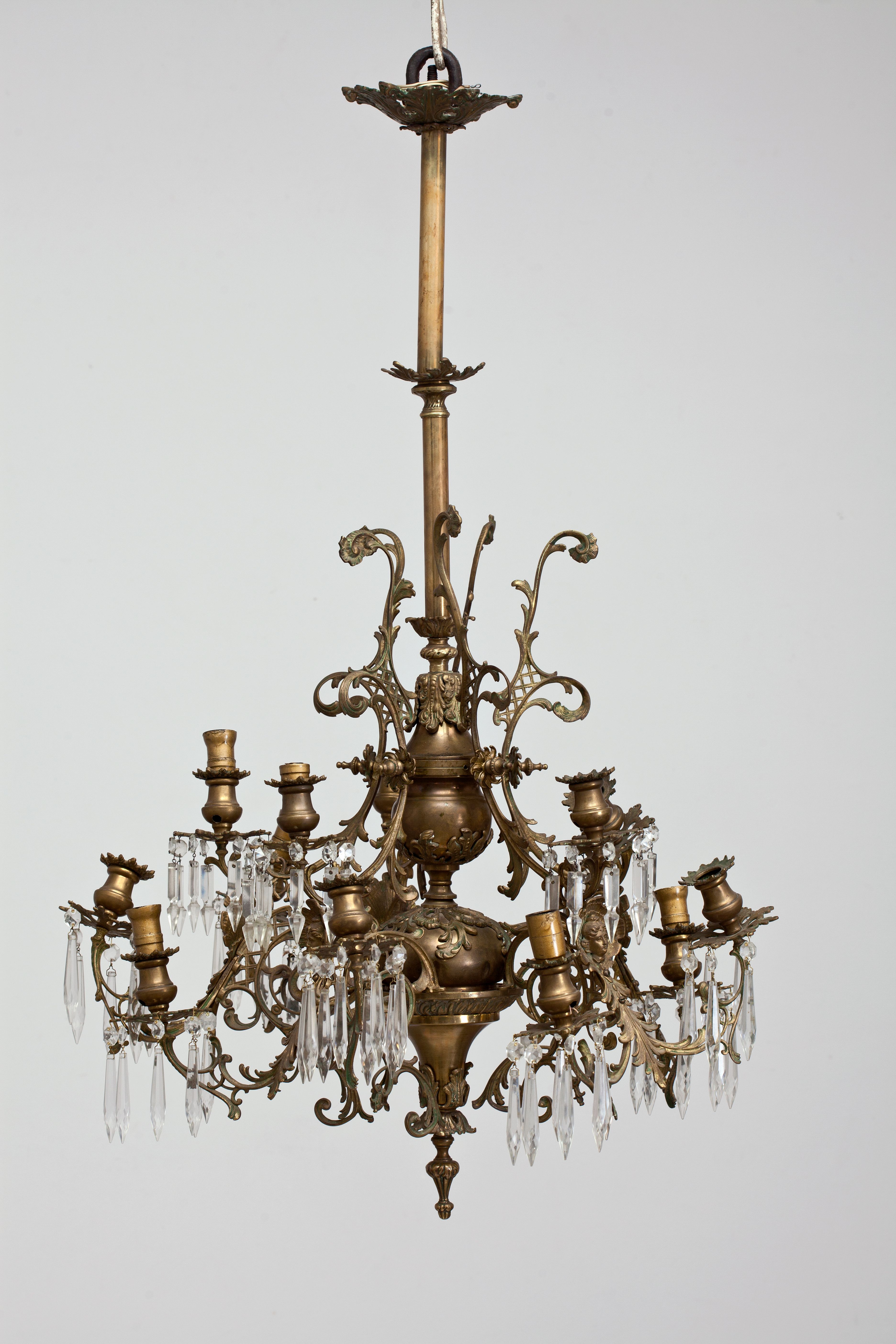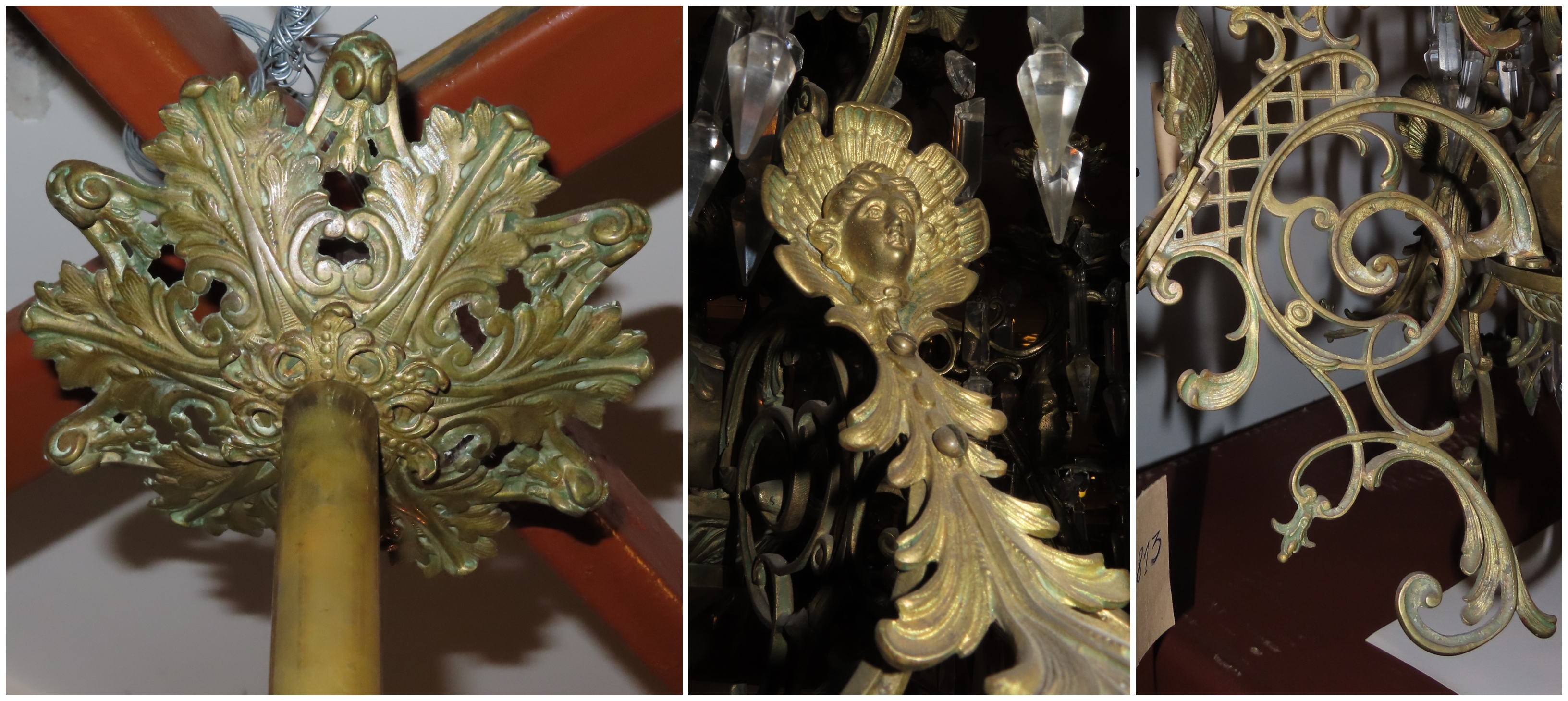The National M. K. Čiurlionis Museum of Art
Inv. No. Tt-13813
Address: V. Putvinskio str. 55, Kaunas
Time of origin: 1850–1899
Place of origin: Central Europe
Material, Technique: bronze: casting, cizeling; crystal: polishing
Dimensions: height – circa 100 cm
The stem-type chandelier is cast in bronze and has 18 candlesticks (not all of them have survived) arranged in two stories. The chandelier has a traditional and standard structure. A cast rosette of acanthus leaves and volutes is at the top, a small leaf flower gives the ornateness to the flat stem tube little below, and two large spheres form the visual centre of the ware surrounded by conical-shape details at the top and beneath. The network of arms is complex, consisting of many curves attached to the upper and lower spheres. The chandelier shows the features of the neo-Rococo style. Flame ornaments cast on many parts, arms decorated with trellis* and faces of Venus (ancient Greek — Aphrodite) cast in the shells. Tracery drip pans of the candlestick are decorated with polyhedral crystal pendants. The entire surface of the chandelier shows the remains of gilding.
The décor elements and size of the chandelier suggest that it hung in a secular interior, perhaps in the manor house or in a house of the wealthy townsman. The chandelier is quite a typical workshop product of the 2nd half of the 19th century.
* Treillage (from old French) – a décor motif in the form of a lattice, characteristic of Baroque and Rococo applied decorative art, for example, in the decoration of interior equipment, furniture, metal liturgical accessories, etc.
Literature and sources:- Dailės žodynas, Vilnius: Vilniaus dailės akademijos leidykla, 1999, p. 428.
- Valtaitė-Gagač Alantė, XVII a.–XX a. 4 dešimtmečio sietynų paveldas Lietuvoje: Daktaro disertacija, Vilnius: Vilniaus dailės akademija, 2015, p. 238.

